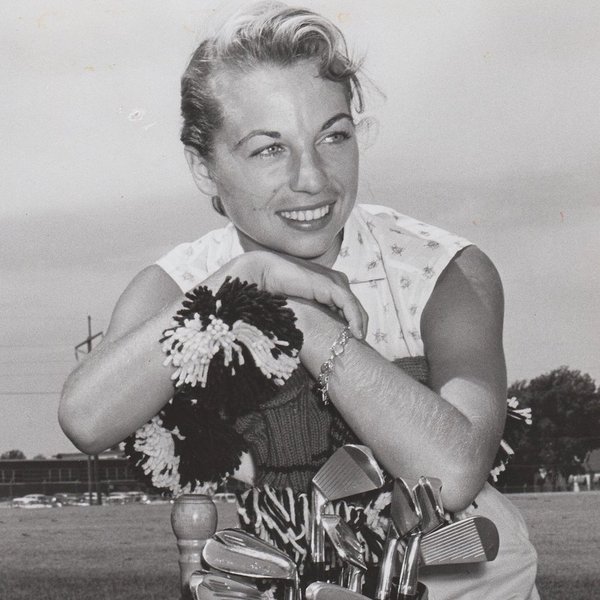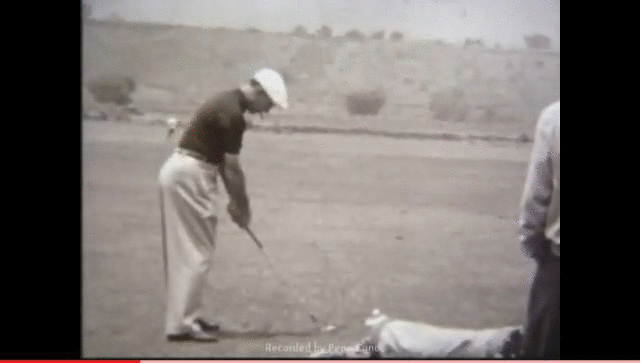A number of years ago, when I experimented with a new swing idea every week, instead of every other week like I do now, I tried out something I came across in a golf forum–the Lee Trevino swing.
You know, wide open stance, odd takeaway, odd lurch through the ball. At least that’s what it looked like to me.
The forum post quoted from his description of the swing in an issue of Golf Magazine, so I tried it. It took a few weeks to get it down.
But the proof of a new idea is the golf course, not my back yard.
I played nine holes with this swing, and had one of three ball flights: straight, straighter, and straightest, right where I was aiming. I never got Trevino’s fade, just absolute straight. No complaints.
I have never hit the ball so straight for such a prolonged period. I think I only flubbed one shot. It seemed so easy.
Unfortunately, and there is always one of those when things are going well, when I was finished playing my back hurt. After a practice session in the back yard, my back hurt. So all that adds up to letting a real good thing go, because it wasn’t worth it to me.
But then, I had a bad back already, so maybe if your back is all right you can figure out this swing and use it for your own on a tight hole where your only option is a straight drive, for example.
This is the GM description (emphasis and comment are mine):
YOU CAN LEARN TO HIT MY FADE
Here is a simple method that will help you develop an accurate left-to-right shot
By LEE TREVINO
Golf Magazine, December 1979
“I almost always “push” the ball. That’s the easy way to think of my fade, as a push/fade to the target. Very little can go wrong: Your wrists can’t roll over and surprise you with a snap hook. You don’t have to worry about releasing early or late, because, in effect, you don’t release at all. And you don’t need to fret about a “double cross” aiming left and hitting farther left by mistake. With my method, the ball drifts to the right every time.
“To begin, make sure your shoulders, hips and feet line up to the left of your intended target with the shoulders slightly less open than the hips and feet. Aim the clubface at the target, open to your body alignment. Play the ball about one to two inches inside your left heel and start the club back along the target line. This will put the club on an inside path in relation to your body.
“On the forward swing, shift your hips laterally toward the target and swing the club down on the target line, holding your release and keeping the clubhead on the target line well after impact. [And you don’t turn your hips until after you have hit the ball.] You should have the feeling of swinging very much inside-to-outside and in fact, you are.
” ‘Inside out?’ you might ask. ‘Doesn’t that cause a draw?’ Yes, it does, but only when your swing is inside out in relation to your target line. This swing is inside out in relation to the body alignment, but straight back to straight through in relation to the target line (see illustration). You won’t draw the ball with this swing. If anything, you will contact the ball after the club has swung down and back to the inside on the forward swing, thus putting a slight left to right spin on the ball.
“So you have two big pluses here: First, you have an inside to outside attack in relation to your body. This is much more powerful than the outside-to inside swings that many amateurs use to fade the ball. Second, you have the club moving down the target line, producing either a straight ball or slight fade. You can’t beat that combination.
“Here’s a trick that might help you understand this a little better. After you set up, imagine that there are three golf balls in front of the one you’re about to hit (see illustration). For the fade, you want to hit through all four balls. This will force your right shoulder down rather than around on the downswing, with your arms extending toward the target on the follow through. Keep in mind that the right shoulder doesn’t dip. That would cause fat shots. Instead, the shoulder simply swivels underneath the chin. As a result, you will hold your release, keep the club moving down the target line, and push the ball to the hole, with very little sidespin.
“I have, however, encountered one “problem” among people who have tried this method. They say to me, ‘Lee, when I swing your way, I hit the ball way to the right.’ I just tell them, ‘Aim farther left.’ Don’t open your stance more; just shift your entire orientation to the left. In other words, rather than aim the clubface down the fairway or at the pin, aim it at an intermediate target more to the left and shift your body alignment farther to the left as well. There’s no rule that says you have to aim down the middle. Line up for the trees on the left and push it down the fairway. It’s easy, when you know for sure that you can hit the push/fade.
“The beauty of the balls in a line image is that you can use it to draw the ball, too. For the right to left shot, line up your body parallel to the target line and aim your clubface at an intermediate target to the right, to allow for the draw. Then, simply think of picking off the first ball in line, the real ball, without touching the three imaginary ones. This brings the right shoulder and club up quickly in the follow through, and whenever the club and shoulder move up, they go counterclockwise as well, which closes the clubface. Result: a draw.
“Try my method. You’ll see how easy it is to fade and draw the ball. You’ll always know where the ball is going. And in golf, there’s no substitute for accuracy. I can vouch for that. A key to hitting consistent, solid fades is to keep the right shoulder moving down under the chin through impact.”






